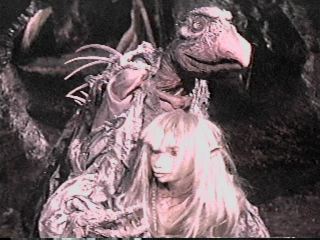I spent much of the weekend doing much-needed gardening, even taking Friday afternoon off work because the rainy weather had given way to a day of relative sunniness. I put in 3 days of exhausting labor but am proud of the results.
Two of the three parking strip raised beds are prepped and ready for spring. The dirt in all three beds settled quite a bit in the past year so I sacrificed one bed to fill the others. I'm pleased to see how healthy the dirt has become: it's filled with wriggling earthworms.
In one of the beds I planted new asparagus roots, potatoes, and green onions. As soon as I get my hands on some strawberry starts, those will go in with the asparagus. Last year I
planted asparagus on my front right slope in the hopes that it would be a good fit for that spot.
It wasn't. In fact, not a single shoot has appeared this spring. "
Uncle!"
I'm going to just give up on that section of the yard. It's never been a good spot for a garden and is subject to winter erosion. It won't be hard to let it return to grass - it's nearly there. (OK, truth be told I'm only going to give up on the left half of this slope; the right half will host my artichokes, more rhubarb, blueberries, and whatever else I feel like planting there.)
 |
| Front yard, right slope |
Getting back to the raised veggie garden: the second bed contains over-wintered leeks and celery. To them I added some lettuce, spinach, and bush peas this weekend. I'll do successive plantings in the coming weeks to stretch out the harvests of each. After I get more dirt for the third bed I'll plant tomatoes and tomatillos in it. I'm hoping we'll put in 2 additional beds on the parking strip this spring as well. Likely plantings include parsnips, basil, carrots, squash, eggplants, and other stuff yet-to-be-decided.
 |
| Veggie beds on the parking strip |
The left slope in the front yard, which is a combo of herbs and flowers, is newly weeded and even got an infusion of plant starts from my grandma's yard.
 |
| Front yard, left slope |
The backyard, after a winter of being ravaged by chickens, got my full attention on Sunday. Unfortunately my work made me feel like the movie "Groundhog's Day": didn't I
just go through this? A year ago I rototilled the large chicken run, planted grass, and put fences around the more vulnerable plants. By fall the grass was gone and many of the plants were barely clinging to life. The hens' larger run was a disgusting mud pit and we still haven't dealt with the drainage issue.
 |
| View from back porch |
On Sunday I did what I could to make the yard better. I again tilled the soil, this time by hand, raked, and replanted grass. I transplanted the remaining plants to other parts of the yard and left only the shrubs and raspberry plants. The rest will be grass. It'll be good for Rosemary to have a little more room to crap and run. The chickens are relegated henceforth to their smaller run, which is probably 7'x15'. They've been bitching to be let out ever since.
 |
| View of backyard from garage toward coop (out of view) |
I've officially given up on having a vegetable garden in the backyard.
Last summer did me in and I just can't handle the disappointment of it. I tried for several years, years that included some very nice summers, to grow things like artichokes, peas, and green onions. Every attempt was mostly a failure. Last summer was unusually cool and yet the parking strip garden out-performed the backyard's best years. "
Uncle!"
 |
| View of new cut garden |
My former veggie garden has yielded way to a cut flower garden containing mostly things from Grandma's yard. I even got a start from her rhubarb, which I believe was itself a start from rhubarb on my great-grandparents' farm on Fox Island (my great-grandfather gave WA State the 40' of waterfront property
where the bridge lands, and if you know Fox Island, the flag pole you can see from that spot was erected by my ancestors). Keep your fingers crossed that it survives. It's always been a prolific plant and I'm hopeful it'll do well at my house.
 |
| Has this rhubarb lasted 4 generations? |
The new cut flower garden is joined by a birdfeeder from Grandma's yard, and will be bordered by more grass. I had gotten rid of over half of the grass since buying this house nearly 8 years ago, during which time my life has changed dramatically. I hadn't even met Gene when I moved in, and hosted just 2 of the dozen animals that now live here with us. Having a little more grass will make our itty bitty yard seem more open and make it more welcoming to our friends' young children.
I still feel kinda bad about planting grass, though. But sometimes you've just gotta cry "uncle".


















































